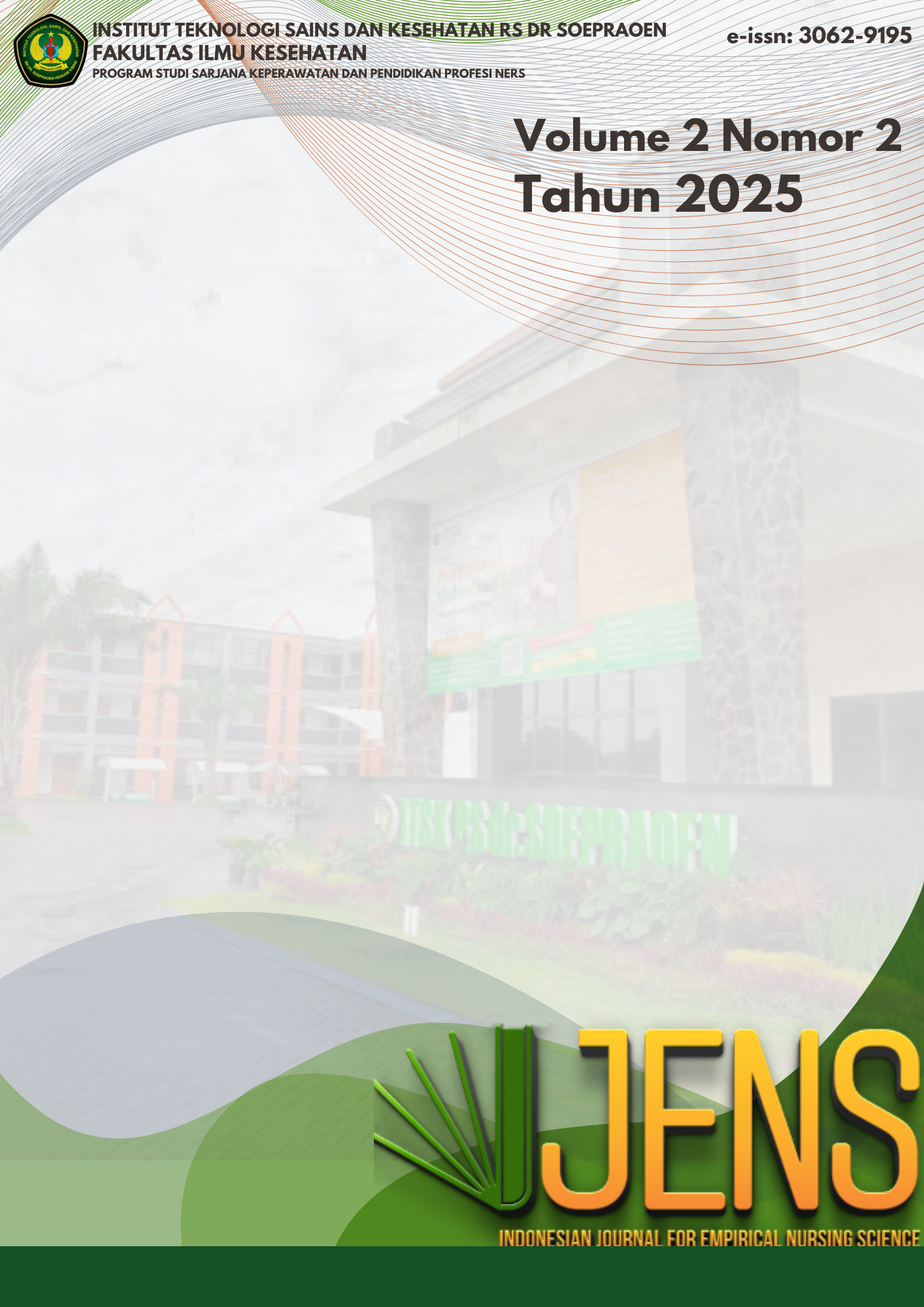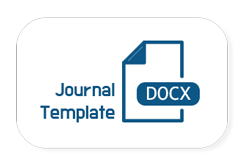THE EFFECT OF THE BUTEYKO BREATHING TECHNIQUE AS A NURSING INTERVENTION ON OXYGEN SATURATION IN ASTHMA PATIENT
DOI:
https://doi.org/10.47794/ijens.v2i2.64Keywords:
bronchial asthma, buteyko breathing techniqueAbstract
Bronchial asthma is a chronic inflammatory disease of the airways that causes bronchial hyperreactivity and leads to episodic symptoms such as shortness of breath, coughing, and wheezing, which are reversible in nature. In emergency conditions, disturbances occur in the airway, breathing, and circulation, characterized by an increased respiratory rate (>30 breaths per minute) and decreased SpO₂ levels due to hypoxia. This condition requires immediate management as it can be life-threatening.
This study aims to determine the effectiveness of the Buteyko breathing technique as a nursing intervention to improve oxygen saturation in asthma patients in the inpatient ward of Lavalette Hospital. A descriptive method in the form of a case study of nursing care was used to evaluate the effectiveness of the Buteyko breathing technique in increasing oxygen saturation among asthma patients in Lavalette Hospital, Malang. The approach was based on the nursing process, including assessment, nursing diagnosis, planning, implementation, and evaluation, to provide an in-depth understanding of the intervention outcomes. The results showed an improvement in oxygen saturation and a decrease in respiratory rate after the implementation of the Buteyko breathing technique in asthma patients. Both patients demonstrated better breathing patterns, reduced shortness of breath, and increased independence in performing the breathing exercises. The Buteyko breathing technique is effective as a non-pharmacological intervention to enhance oxygenation and improve respiratory function in patients with asthma.
References
Angela. M. (2020). Buku Ajar Asuhan Keperawatan Klien dengan Gangguan Sistem Pernapasan. Jakarta : Salemba Medika
Bae, W. D., Kim, S., Par, C., S Alkobaisi, S., Lee, J., Seo, W., Park, J. S., Park, S., Lee & Lee, J. W. (2021) Performance Improvment Of Machine Lerning techniques Predicting the Association ofExacerbation of Peak Expiratory Flow Ratio withshort term exposure level to indoor air quality using Adult Asthmatics clustered data. PLOS ONE, 16(1)
Bachri, Y. (2018). Pengaruh Teknik Pernafasan Buteyko Terhadap Frekuensi Kekambuhan Asma Pada Penderita Asma Bronkhial Di Upt Puskesmas Wilayah Kerja Lima Kaum 1 Kabupaten Tanah Datar Tahun 2017. Jurnal Menara Ilmu, XII(8), 174–179. https://www.jurnal.umsb.ac.id/index.php/menarailmu/article/viewFile/881/7 92
Clark, Margaret Vernell. (2019). Buku Asma Panduan Penatalaksanaan Klinis. Jakarta : Penerbit Buku Kedokteran EGC.
Courtney, R. ( 2017). Strenght, weakness, and possibilities of the Buteyko Breathing Method. Biofeedback36(2), 59 63.
Hasibuan, P. A. (2018). Hubungan tingkat kontrol asma dengan usia dan jenis kelamin penderita asma di rumah sakit umum Haji Medan. Journal of Physical Therapy Science, 9(1), 1–11.
Hassan. Z, M.. Riad. N. M.. & Ahmed. F. (2018). Effect of Buteyko Breathing techniquue on Patient with Broncial Asthm. Egyptian Journal of Chest Disease and Tuberculosis, 61, 235-241
Hardani, Ustiawaty, J., & Andriani, H. (2017). Buku Metode Penelitian Kualitatif dan Kuantitatif (Issue April).
Karpagam, K., Mangalagowri, P., & Shanmugam, A. (2017). effectiveness of Buteyko Breathing Techniques and Pursed Lip Breahing Technique in Improving Peak Expiratory Flow Rate in Patient Asthma. Intetnational Journal Parma and bio Science. 8(3). 457-464.
Khasanah, S., & Maryoto, M. (2014). Efektifitas Posisi Condong Ke Depan (Ckd) Dan Pursed Lips Breathing (Plb) Terhadap Peningkatan Saturasi Oksigen Pasien Penyakit Paru Obstruktif Kronik (PPOK). Prosiding Seminar Nasional & Internasional, VII(2012), 25–36.
Litanto, A., & Kartini, K. (2020). Kekambuhan asma pada perempuan dan berbagai faktor yang memengaruhinya. Jurnal Biomedika Dan Kesehatan, 4(2), 79–86. https://doi.org/10.18051/jbiomedkes.2021.v4.79-86
Mohammed, E. M.. Elmetwalty, A.. & Ibrahim , A. M. (2018). Buteyko Breathing Techiques : A Goldeb Cure of Asthma.
Nursalam. (2020). Konsep dan Penerapan Metodeologi Penelitian Keperawatan.
Pratiwi, S. S., & Chanif, C. (2021). Penerapan Teknik Pernapasan Buteyko terhadap Perubahan Hemodinamik Pada Asuhan Keperawatan Pasien Asma Bronchial. Holist Nurs Care Approach, 1(1), 9-17.
PPNI. (2018). Standar Diagnosis Keperawatan Indonesia. DPP PPNI.
PPNI. (2018a). Standar Intervensi Keperawatan Indonesia: Definisi dan tindakan. DPP PPNI.
PPNI. (2018b). Standar Luaran Keperawatan Indonesia: Definisi dan Kriteria Hasil. DPP PPNI.
Riskesdas. (2018). Badan Peneitian dan pengembangan Kesehatan Kementerian RI tahun 2018
Tarwoto. W. & Taufiq, I. (2017). Keperawatan Medikal Bedah Gangguan Sistem Endokrin. Jakarta : CV Trans Info Media.
Tim Pokja SDKI DPP PPNI. (2016). Standar Diagnosa Keperawatan Indonesia (Definisi dan Indikator diagnos
Udayani, W., Amin, M., & Makhfudli, M. (2020). Pengaruh Kombinasi Teknik Pernapasan Buteyko Dan Latihan Berjalan Terhadap Kontrol Asma Pada Pasien Asma Dewasa. Jurnal Ilmiah Keperawatan (Scientific Journal of Nursing), 6(1), 6–12. https://doi.org/10.33023/jikep.v6i1.
Wilda, L., Hutama, F., & Fatimah, N. (2021). BUTEYKO BREATHING EXERCISE PADA ASMA CONTROL LANSIA Buteyko Breathing Exercise In Asthma Control Elderly Lexy Oktora Wilda *, Fitra Handika Hutama *, Nur Aini Fatimah * PENDAHULUAN Menjadi keadaan yang tua adalah di suatu dalam mengetahui pengendalian asm. 12(November), 205–213.
World Health Organization (WHO). (2020). Asthma Fact Sheets.i. http://www.who.int/mediacentre/factsheets/fs307/en/
World Health Organization, (WHO). (2022). WHO report on Atshma 2022.



